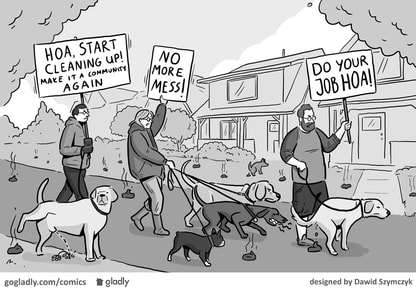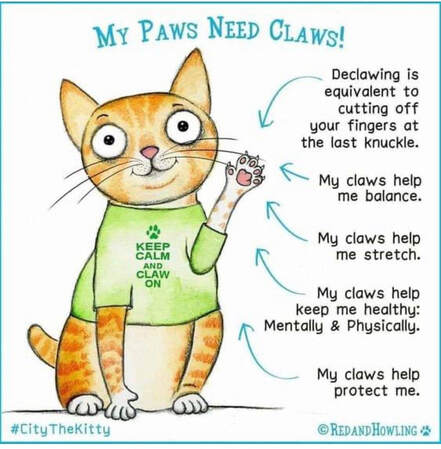 Living in an apartment complex or a community governed by a homeowners' association (HOA) has its perks. You enjoy shared amenities, a sense of community, and often, well-maintained outdoor spaces. However, one common challenge in these communal living environments is pet waste management. In this post, we'll explore the importance of effectively managing pet waste in apartment complexes and HOAs and provide a guide to help maintain a clean and pleasant environment for all residents. Why Pet Waste Management Matters
Effective Pet Waste Management Strategies
Eco-Friendly Considerations Consider incorporating eco-friendly practices into your pet waste management strategy:
Effective pet waste management in apartment complexes and HOAs is essential for maintaining a clean, safe, and enjoyable living environment. By implementing clear policies, educating residents, and providing the necessary resources, you can ensure that pet owners in your community are responsible and respectful of shared spaces. In doing so, you'll create a harmonious and appealing community for all residents, whether they have pets or not. Don't forget Little Landmines can help with this! We offer neighborhood bundling discounts, referral credits, and pet waste station installation and maintenance!
0 Comments
 As the leaves change color and the air turns crisp, there's no denying that fall is a magical season. It's the perfect time to spend quality moments with your furry friend, enjoying the great outdoors and making cherished memories. At Little Landmines Pet Waste Removal, we understand the importance of maintaining a clean environment for your pets, but we also know that fall offers a plethora of opportunities for you and your dog to have some fun. In this blog post, we'll explore some fantastic activities that will make this autumn unforgettable for both you and your four-legged companion. Scenic Nature Hikes: Fall foliage creates a picturesque backdrop for a leisurely hike. Choose a local trail that's dog-friendly and take your pup on an adventure through the vibrant woods. The cooler temperatures and the sound of leaves crunching underfoot will make the experience all the more enjoyable. Remember to keep your dog on a leash and pack essentials like water, snacks, and waste bags. Pumpkin Picking: Pumpkin patches are a hallmark of autumn, and they can also be a fantastic outing for your dog. Many pumpkin farms welcome well-behaved dogs on leashes. Let your furry friend join in the search for the perfect pumpkin, and don't forget to capture some adorable photos of them posing with the vibrant orange gourds. Doggy Playdates: Fall weather is ideal for outdoor playdates with other dog owners. Organize gatherings at local parks or dog-friendly beaches, where your pup can socialize, run, and play with other furry friends. It's a great way for your dog to burn off energy and for you to bond with fellow dog lovers. Canine-Friendly Festivals: Check your local events calendar for fall festivals that welcome dogs. Some communities host pet-focused festivals or Halloween parades where dogs can dress up in adorable costumes. Be sure to consider your dog's comfort level with crowds and costumes, and choose events accordingly. Cozy Picnics: Pack a picnic basket with your dog's favorite treats and head to a scenic park for a cozy afternoon outdoors. Enjoy the sights, sounds, and smells of fall while sharing some quality time with your furry friend. Don't forget a comfy blanket to lounge on. Agility Training: Fall is an excellent season to engage in agility training with your dog. Set up an agility course in your backyard or visit a local agility park if available. It's not only a great way to keep your dog active but also to challenge their mental skills and bond with them through training exercises. As autumn paints the world in vibrant hues, seize the opportunity to create beautiful memories with your canine companion. These fun fall activities will not only keep your dog happy and healthy but also strengthen the bond between you two. And remember, while you're out enjoying the season, don't forget to clean up after your pet with Little Landmines Pet Waste Removal, ensuring a clean environment for all to enjoy. Happy fall, everyone!  At Little Landmines Pet Waste Removal, we're passionate about providing a safe and loving environment for our feline friends. As advocates for responsible pet ownership, we believe it's essential to address the sensitive topic of declawing cats. In this blog post, we'll discuss why you shouldn't declaw your beloved feline companions and explore alternative solutions to common issues associated with scratching. The Physical and Emotional Toll Declawing is not a simple nail trim; it's a surgical procedure that involves amputating the last bone of a cat's toes, including the nail bed and part of the tendons. This procedure can lead to chronic pain, lameness, and lasting emotional trauma for your cat. Imagine having the tips of your fingers amputated—it's a painful thought, right? Natural Instinct and Defense Cats scratch for various reasons, including maintaining healthy claws, stretching their muscles, and marking territory. This natural behavior is deeply ingrained in their instincts, and it's unreasonable to expect them to stop. Removing their claws takes away their primary means of defense and communication, leaving them feeling vulnerable and anxious. Behavioral Issues Declawed cats often develop behavioral problems, such as biting, inappropriate litter box use, and aggression. This is their way of coping with the loss of their claws and the pain associated with the surgery. Rather than solving problems, declawing can exacerbate them. Alternatives to Declawing Instead of resorting to declawing, there are humane alternatives to manage your cat's scratching behavior: a.Provide Scratching Posts: Offer your cat a variety of scratching posts, boards, and pads to satisfy their natural urge to scratch. Encourage them to use these alternatives by placing them strategically around your home. b. Regular Nail Trims: Schedule regular nail trims with your veterinarian or a professional groomer. Keeping your cat's claws trimmed can minimize the damage caused by scratching. c. Soft Nail Caps: Consider using soft nail caps, such as Soft Paws or Soft Claws. These can be a temporary solution to protect your furniture without harming your cat. d. Training and Positive Reinforcement: Reward your cat with treats and praise when they use their scratching posts and redirect them when they scratch furniture. Consistent training can be effective in steering their behavior in the right direction. As responsible pet owners, it's our duty to prioritize the well-being and happiness of our furry family members. Declawing is a drastic and unnecessary procedure that can cause physical and emotional harm to your cat. Instead of taking this route, we encourage you to explore humane alternatives that allow your cat to express their natural instincts while preserving their physical and emotional health. By understanding our cats natural behaviors and providing them with alternatives, we can create a harmonious living environment for both our cats and ourselves. Let's stand together against declawing and promote a future where our pets are treated with the love and care they deserve! |
AuthorVisit the Dog Blog on Little Landmines for fun musings, puns, tips & tricks by Jennifer Sparks, owner of Little Landmines and resident animal lover Archives
July 2024
Categories |
 RSS Feed
RSS Feed
